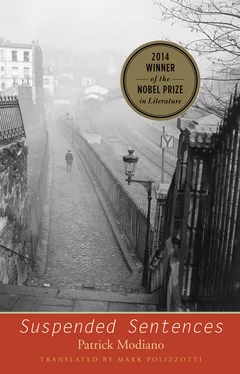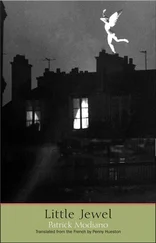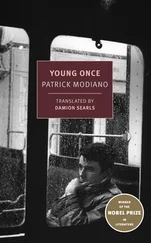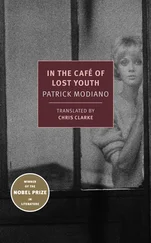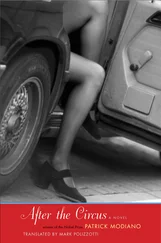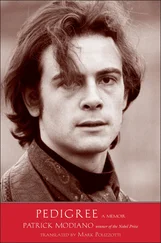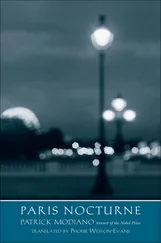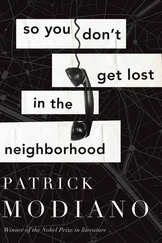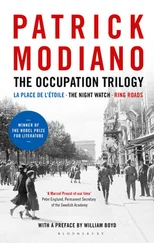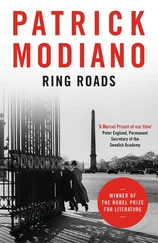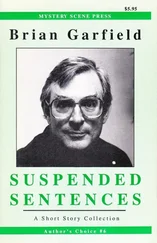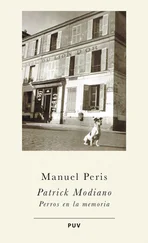And so I managed to garner a few scraps of information: the last duc de Bellune was, on his mother’s side, of Anglo-Portuguese origin by the Lemos and Willoughby da Silveira families. Died in 1907, without a male heir. His youngest daughter had married a certain Fernand-Marie-Désiré Werry de Hults, Belgian but a “Roman count,” and from their union were born two sons and a daughter named Eliane. In 1919, according to the Social Register, they all lived in a private hotel at 4 Rue Greuze in the sixteenth arrondissement. And in fact, listed at the same address were a certain Riclos y Perez de Pacheco and wife, née Eliane de Hults. These two were surely the parents of the Pacheco I knew. As of 1927, judging from the phone books, this curious family had disappeared from number 4 Rue Greuze without leaving a trace. In 1953, a comtesse de Hultz-Bellune resurfaced, at 4 Rue du Dôme, and, the following year, at the same address and phone number: Pacheco (Mme de). Then, nothing.
On the few occasions when I was alone with Pacheco in the cafeteria, I ventured a question in hopes that he’d answer and fill in other bits of information.
“In 1953, did you go visit your mother on Rue du Dôme?”
That time, I saw I’d touched a nerve. He suddenly turned white as a sheet. I needed to push my advantage.
“I have no idea what you’re talking about.”
He was on the defensive. Why had that detail upset him so much? I thought I knew the answer: 1953, 1954 … It was no longer about his ancestor, Maréchal Victor. We were getting dangerously close to the present and to a tramp in a faded coat and worn snow boots who only recently had paced up and down Boulevard Jourdan. I was eager to see his reaction when I mentioned that man to him. Would he flinch, like someone who’s afraid of his shadow?
Several weeks passed, during which there was no sign of him. Did his work keep him away from the Cité Universitaire? At the Pavillon des Provinces Françaises, I inquired whether a certain Pacheco had a room there. They knew of no such student by that name, or of anyone in his fifties with short hair who wore a tan linen suit and buckskin shoes. Evenings in the cafeteria, I questioned members of our little group.
“Any news of Pacheco?”
“Nope.”
Already our Moroccan and Scandinavian friends had stopped talking about him. He was fading from their memories. Life went on without Pacheco: the afternoons and evenings on the great lawn, walks through the Parc Montsouris, dinners beneath the arbor of the Asian restaurant on Avenue Reille … I ended up thinking we’d never see him again. As luck would have it, I chanced upon two small items in a batch of old newspapers from the years 1946 to 1948. The first gave a list of persons being sought because of collaborationist activities during the Occupation. Among these figured “Philippe de Bellune, alias ‘de Pacheco,’ said to have died last year following his internment at Dachau.” But there seemed to be some doubt about this alleged death. Two years later, in 1948, a newspaper published a small item listing indicted individuals who had failed to show up for their court hearing, and who were now wanted by the police: number 3 on the list was “Philippe de Bellune, born Paris, January 22, 1918, no known address.” Which means that his death had still not been confirmed by then.
The fate of a man wanted for colluding with the enemy, who might or might not have survived the Dachau concentration camp, left me puzzled. What set of circumstances could have pulled him into such a conflictual situation? I thought of my father, who had weathered all the contradictions of the Occupation period, and who had told me practically nothing about it before we parted forever. And now here was Pacheco, whom I’d barely known, and who was also slipping away without providing an explanation.
He reappeared one Sunday night, in the Cité cafeteria. It was late and there was no one left around the Formica tables. I was sitting next to the window that looked out on Boulevard Jourdan and, when I saw him enter in his tan suit and suede moccasins — his hair a bit longer than usual and his skin tanned — my heart skipped a beat. He came over to sit beside me as naturally as if he’d left only moments earlier to make a phone call.
“I thought we’d never see you again,” I said to him.
“Air France sent me to work in an airfield in Morocco … In Casablanca … I had to stay for quite a while.”
“I found out you were interned in Dachau during the war,” I blurted.
“No.”
He sat without moving, staring straight ahead, as if he dreaded other revelations from me.
“And that you were wanted by the police after the war for conspiring with the enemy. It was back when you called yourself Philippe de Bellune.”
“You’re mistaken.”
“For a while, they thought you had died in Dachau …”
“Died?”
He shrugged.
“Why were they looking for you after the war?”
He sliced his pan-bagnat into very thin strips, using a fork and knife.
“You’ve got an active imagination … But this evening I’m very tired …”
He gave me a smile, and I understood that I wouldn’t get anything out of him. In the days that followed, we saw each other with the rest of the group, with no opportunity for a private conversation. He invited us to dinner, as was his wont, at the restaurant on Avenue Reille. His friend from Air Maroc was there that evening. And, as usual, he handed out “duty free” cartons of American cigarettes, perfumes, and fountain pens, and little souvenirs he’d brought back from Casablanca.
I didn’t want to embarrass him by asking if he really lived at the Pavillon des Provinces Françaises. We again had occasion, several times, to walk him back to his pavilion at night and watch him go up the large staircase, but I didn’t feel like sitting on the bench behind the privet hedges to see if he’d go out again a few minutes later.
One late afternoon in that month of September, while we were lying on the lawn of the Cité Universitaire, enjoying the last of the warm weather, Pacheco showed us photos of the airfield and the avenues of Casablanca. On one of them, we could see him in a steward’s uniform in front of a building whose whiteness stood out against the cerulean sky. Everything was distinct in that sundrenched décor: the whites and blues, the shadow jutting out from the foot of the building, the sand-colored steward’s uniform, Pacheco’s smile, and the gleaming fuselage of a sightseeing plane in the background. But I was thinking of a certain Philippe de Bellune whose contour had melted into the fog long ago. His fate had been so uncertain that they thought he’d died right after the war. He didn’t even use his real name. What had the life of that man been like, the one born in Paris on January 22, 1918? He must have spent the early years of his childhood at 4 Rue Greuze, in the home of his parents and grandparents. Out of curiosity, I’d checked the phone book: 4 Rue Greuze was now the seat of the Chaldean Church. They had probably turned the ground floor into a chapel, where they celebrated the rites of that Eastern religion. Had they left his childhood bedroom intact? I planned to attend a Chaldean Mass, then slip out of the chapel to go explore the upper floors of the private hotel. And perhaps find witnesses who had known Pacheco on Rue Greuze. At number 2, the building next door, a Princess Duleep-Singh had lived around 1920, and that name awakened a childhood memory: I’m waiting for my father one Friday evening, in a train station on the Normandy coast. Among the passengers getting off the train from Paris is a dark-complexioned woman surrounded by turbaned servants and several young English girls in riding breeches who seem to be lady’s companions. They pile a large number of suitcases onto carts. One of them jostles me as it goes past. I fall and hurt my knee. Immediately, the woman helps me up, leans over me, and, using a handkerchief and a small vial of perfume, rubs the scrape on my knee with a maternal gesture. She’s a woman of about thirty, and the gentleness and beauty of her face fill me with wonder. She smiles at me. She strokes my hair. In front of the station, several American cars are waiting for her.
Читать дальше
